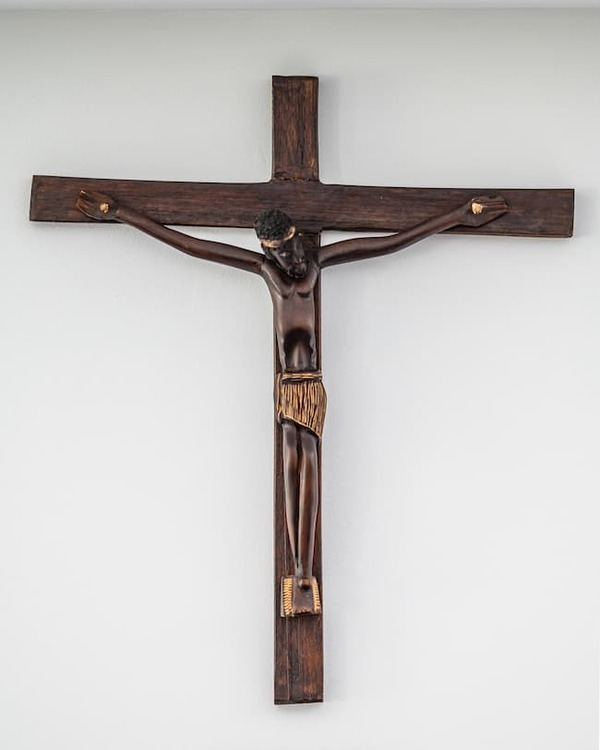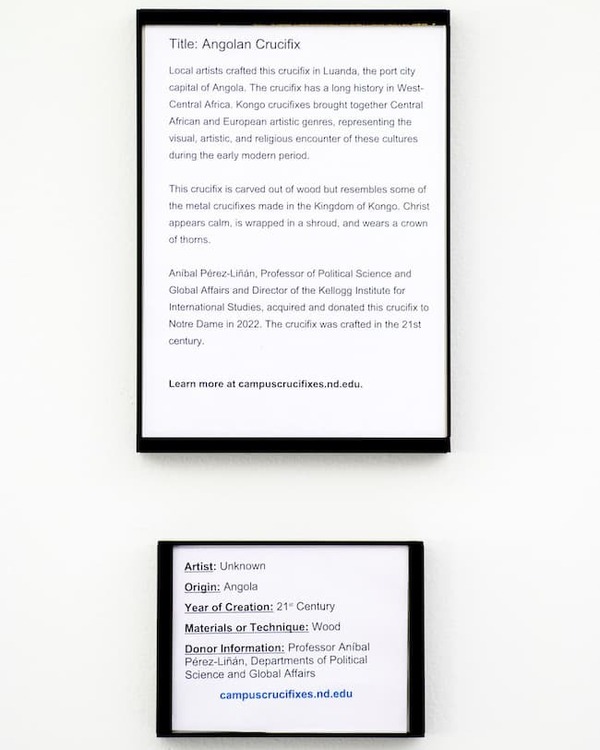Angolan Crucifix
Local artists crafted this crucifix in Luanda, the port city capital of Angola. The crucifix has a long history in West-Central Africa. Kongo crucifixes brought together Central African and European artistic genres, representing the visual, artistic, and religious encounter of these cultures during the early modern period. An abstract vision of the cross appeared as a vessel for ideas to be communicated across cultures. The meeting of these two trains of thought transcribed Kongo religious symbols into discernable expressions of Christian thought. At the end of the fifteenth century, the king of Kongo then converted to the Catholic faith.
Professor Anibal Perez-Linan, who donated the crucifix to the University, describes more background information regarding Catholicism and enslavement in Angola in the following text:
In the late sixteenth century, Portuguese explorers built Luanda as an enclave for trading enslaved people. Between 1500 and 1866, almost six million people were trafficked from Angola to the Americas, equivalent to 46% of all the transatlantic slave trade. Today, Catholics represent about half of the Angolan population, the largest religious group in the country.
This crucifix is carved out of wood, but resembles some of the metal crucifixes made in the Kingdom of Kongo. An example of such a crucifix, currently located in the Raclin Murphy Museum of Art, can be found on the Campus Crucifixes website. Both the vertical and horizontal cross pieces of this Angolan crucifix are quite simple, with no additional adornments or embellishments. Christ appears calm, is wrapped in a shroud, and wears a crown of thorns. The shroud, crown of thorns, and a plate underneath Christ’s feet are lighter than the rest of the crucifix.
Anibal Perez-Linan, Professor of Political Science and Global Affairs and Director of the Kellogg Institute for International Studies, acquired and donated this crucifix to Notre Dame in 2022. The crucifix was crafted in the 21st century.

